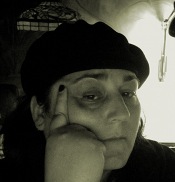As we filed into the crematory, everyone (elderly women included) fell to their knees on the ground, wailing. The howls of the mourners mixed in with the roar of the cremation machine. The effect was eerie. I stood in the back, my eyes wide, feeling like an anthropologist privy to some unknown rite.
It is a Chinese practice to hire professional mourners for a ceremony to help facilitate grief, to whip the crowd into a frenzy. It was difficult to tell if some of the people on the crematory floor were such professional mourners, hired by the family to promote sorrow through their excess emotion. Were professional mourners even available in Oakland? Their grief appeared genuine. But then again, I had never been in a situation like this before, where such a large group of people allowed themselves to be emotionally vulnerable. No still upper lips here.
Suddenly, a man I had somehow missed began weaving his way through the crowd with a video camera, filming the mourners. He would stop in front of a wailer and wave his hands upward, indicating what he wanted from them was more, more wailing! The mourner would let out a louder, more anguished cry and beat the ground. It seemed that no one wanted to get caught on camera looking calm or stoic.
The Huang family was engaged in ritual in the classic sense, mixing belief with tactile, physical action. Andrew Newberg and Eugene D’Aquili, two researchers of the human brain from the University of Pennsylvania, explained that for a ritual to work, the participants must engage “all parts of the brain and body, it must merge behaviour with ideas.” Through their wailing, their kneeling, their grief, Mr. Huang’s family were connecting to something greater than themselves.
[…]
Mr. Huang forced me to think about what I would do if my own father died. Frankly, I hadn’t a clue. There was a good chance that not everyone taking part in this witness cremation felt quite the intensity of grief they were displaying. For some it may have been more performance than genuine sorrow. But that didn’t matter; the Huang family had ritual. They knew what to do and I envied them for it. The knew how to cry, mourn harder, and show up with bowls of fruit. At the time of death, they were a community, rallied around ideas and customs.
— Caitlin Doughty, Smoke Gets in Your Eyes: And Other Lessons from the Crematory
